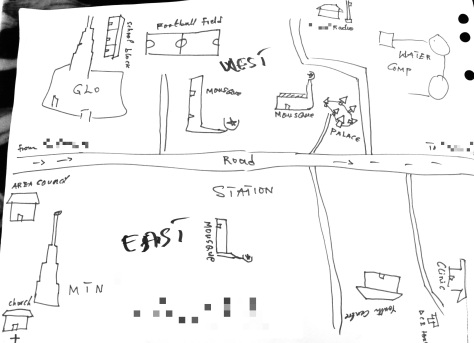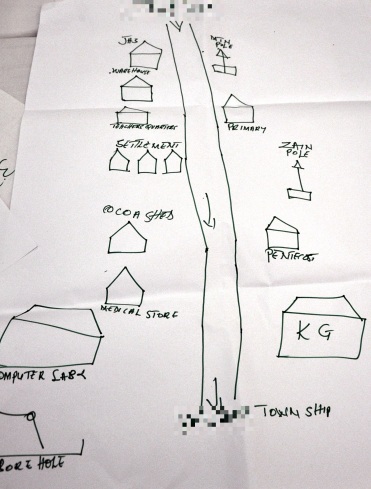
Akua (anonymized) is a community situated about 18km from the district capital. The community has a population of about 1400 people. The majority of residents are Muslem, making up for about 88% of the entire population; about 11% are Christian and the rest practice traditional religions. The ethnicity is predominantly Dagomba. They make up about 95% of the community. Other tribes are the Mossi and the Fulani who constitute about 5% of the population. Festivals celebrated in Akua include the Eid-Ul Adha, Eid-ul Fitr, the Yam festival, the Fire festival, the Damba festival and the Guinea fowl festival.
Dagbani is the main language spoken and it was the language of our improvised discussion. Unlike, the rest of the focus group fieldwork, the discussion in Akua was improvised; rather than organized in advance with the help of outreach staff from locally active agriculture service providers. Farming is the major source of income in the area, with few people engaging in petty trading. Due to the presence of a local irrigation scheme, rice is the most significant crop, constituting about 50% of the crops grown.
The setting of the discussion was improvised. A local outreach worker joined me and we recruited participants as we walked down the main street of Akua. The meeting started with barely ten people but due to the open boundary of the discussion, the participants increased to well over thirty by the time we finished. In giving a brief history of the community, the farmers said that the community was connected to the national grid in 1995-1996.
In casting their eyes back, farmers acknowledged that agronomic innovations were introduced by a very good and helpful extension officer. Unfortunately, he had to depart and left a big vacuum. Farming activities in 2009 went well because the rain was reliable but this was not the case on 2010. The community had problems with flooding every year during the rainy season. Farmers near a local irrigation facility were able to farm all year round, at a fee of Ghc12 per acre. Marketing was also recognized as a problem. Farmers saw agriculture intensification through tractors and combine harvesters as a way forward for thier rice cultivation. They considered shea butter and tomato processing as promising endeavors in the area. This is how the group expressed their hope for change:
“[…] We are liaising on people like you to come and then hear our grief and then send it to appropriate quarters for redress. […] Considering 20 years ago we were almost in total darkness. But now we are in some kind of innovations. Not yet, but since people like you have started coming here, we hope and pray that everything will change at the shortest possible time.”

People in Akua were fortunate to have benefited from foreign donors who set up and maintained a community radio station. One of the effects of the proximity of the radio transmitter was that the signals in the area of all other radio stations were very weak. As a result, the community radio station had a very strong local presence. Most of their programs were in the local language, making it evry easy to understand. Additionally, foreign donors funded the building of a Youth Center, with photocopying, computing, Internet and sports facilities. Apart from sport events, few adults visited the Youth Center. People recognized the business relevance of photocopying, while the relevance of the Internet remained in the “this and that” area of education and youth development.









